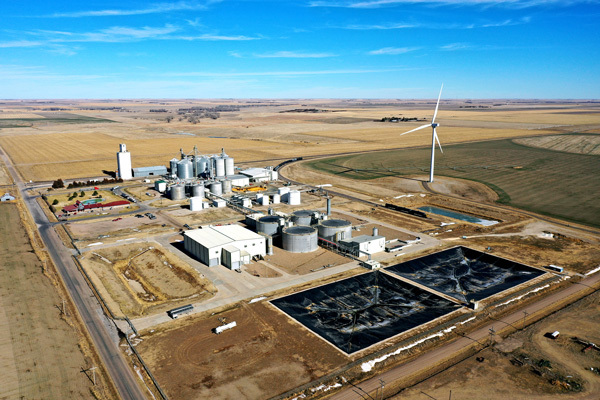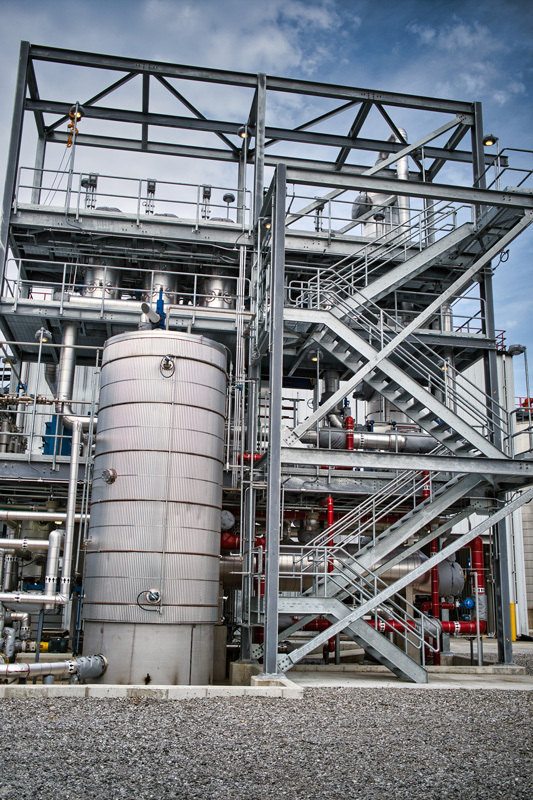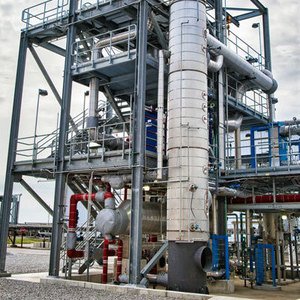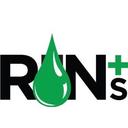CI-Reducing Dehydration






PHOTO: WHITEFOX
February 13, 2023
BY Luke Geiver
Whitefox Technologies has earned its place among the list of technology providers capable of helping ethanol plants reduce emissions and lower their carbon intensity scores. Eventually, it’s about getting them to net zero. To date, the industrial engineering firm with offices in the U.K., Calgary and Omaha, has customized alcohol dehydration membrane solutions for several (10 and counting) ethanol plants in the U.S. And in January, the day after Ethanol Producer Magazine spoke with two Whitefox executives about the history of their company and their newest and most popular offering—including what makes their tech ultra-relevant right now—they were off to Iowa to meet with a group of ethanol producers interested in in what they do.
Removing Limitations
Gillian Harrison is the CEO of Whitefox. She points to 2014 as a pivotal time for the company. Until then, Whitefox had primarily operated in Europe, specifically with industrial firms trying to reduce water and energy consumption. In 2014, Harrison and her team headed to the U.S. to explore the possibilities of matching what Whitefox could do with what the U.S. ethanol sector needed. They went straight to the largest gathering of ethanol producers in the U.S. to start.
At the International Fuel Ethanol Workshop & Expo, the Whitefox team met with several ethanol producers, plants of all sizes and locations. “We didn’t go into any of our talks with a clear solution in mind,” she says. “But it became apparent that they were all facing very similar bottlenecks.”
Each producer they talked to, in one way or another, had boiler issues and capacity-limiting challenges. On top of that, they all wanted to explore the possibility of reducing their carbon intensity, she says.
“That gave us a need,” Harrison says. “Once we thought about how our technology could be applied to the industry, we talked to a lot of producers and it made sense to them.”
What happened next, Harrison says, was a co-realization by both Whitefox and its soon-to-be ethanol industry customers that a new, bolt-on membrane solution could make a significant impact on a facility’s water consumption, steam requirements and overall carbon intensity. Then, it was simply a matter of which ethanol producers were willing to change the way they approached distillation, dehydration and evaporation (DD&E). Before long, a few early adopters stepped forward.
Alto Ingredients, formerly Pacific Ethanol, became the first to install the technology. Today, nine ethanol facilities have added some form of membrane solution from Whitefox, and a tenth is in the process of doing so. Each solution in the portfolio does some things a bit different or creates unique benefits, Harrison says.
Tony Short, head of global sales for Whitefox, says that the company had to demonstrate its capabilities while also debottlenecking plants using molecular sieves. “We recognized that we had to demonstrate our capabilities step-by-step to not only prove the membrane reliability to a new audience, but to also deliver energy savings and capacity expansion capabilities.”
Reconfiguring to Reduce
The membrane technology created by Whitefox is a combination of mechanics and chemistry. Using polymeric materials (natural material made of large molecules) placed into engineered cartridges, liquids pass through the units. The membranes can distinguish between an ethanol molecule and water. There is a unique capability of the combination of the cartridges and the membranes to retain ethanol without outside, energy intensive aid.
With its trademarked suite of ICE solutions, continuous dehydration is established, reducing energy consumption per gallon of ethanol produced. All of that happens by a reconfiguration of existing distillation. The company's latest offering, ICE XL, fully replaces an ethanol plant's molecular sieves, is 100 percent energy neutral and gets to 190 proof with less condensation and evaporation steps. Steam needs are reduced because of 25 percent lower water load.
Conventional molecular sieve dehydration is a pressure swing adsorption technology that is commonly used in ethanol production. Operation of such a system is cyclical with a variety of recycle streams that sometimes create bottlenecks in DD&E. Conventional MSU dehydration methods are energy intensive, often requiring 184 to 190 Proof as the MSU feed.
The Whitefox method, using the ICE XL, reduces steam consumption in DD&E to 8,000 Btu/gal and helps create a stable, continuous operation without pressure swings. There is zero molecular sieve dust contamination and a cooling water reduction. A review of before and after schematics show a dramatic difference in how the DD&E process happens. The same can be said for every other ICE offering in the Whitefox portfolio of systems.
Whitefox has proven that the DD&E reconfiguration can increase capacity, up to 100 percent. Steam consumption in the evaporation process is reduced by up to 25 percent due to lower water load and improved water balance. The efficiency gains through better heat integration into the process helps reduce natural gas consumption by up to 50 percent—which accounts for a potential carbon intensity score reduction of nearly 8 points.
Despite the numerous core benefits that each system shares, no installation is exactly the same. The Whitefox team does it that way because every ethanol plant is unique and requires a customized solution. Short and Harrison are both quick to point out that no two ethanol plants are the same. They can each list off several they’ve seen firsthand.
“None of our solutions are off the shelf,” Short says. Ethanol clients need to first understand that Short and his team will take time with every new potential client to fully understand their respective process and operating conditions along with their objectives.
According to Short, all versions of the membrane technology (there are four options) are able to dehydrate and separate ethanol mixtures continuously to high purity levels in a single pass, 24/7. Every solution will capture and recycle plant energy without the need for chillers or compressors. “Essentially,” Short says, “Whitefox membranes allow customers to produce more and waste less.”
Producer Adoption
Alto Ingredients installed its Whitefox system over six years ago. Since then, Golden Grain Energy LLC, The Andersons Inc. and others have adopted the technology. And now, Western Plains Energy LLC is following suit. Several years ago, Harrison met Derek Peine, general manager at the Kansas-based WPE facility. She knew right away that Whitefox’s mission to help reduce water usage and energy needs in industrial processes designed to profit would be a good match for the progressive biorefinery Peine runs.
Today, the Kansas plant is installing the first ICE XL in the U.S., and Peine says the integrated membrane technology will contribute to fully decarbonizing the plant’s production process. The project is underway and has an estimated start-up and commissioning date towards the end of 2023. Short, who is working on the project, says the ICE XL will fully replace existing molecular sieves while increasing capacity by 50 percent across distillation and dehydration along with another 50 percent steam decrease.
In North Central Iowa, Whitefox was chosen by Golden Grain Energy LLC for use at its 120 MMgy plant because of its 24/7 capabilities. According to Chad Kuhlers, CEO of Golden Grain Energy, the technology “is a good solution for the plant to debottleneck existing process units,” while offering additional benefits in plant maintenance and overall operational efficiency.
Because the Whitefox systems operate under reduced vacuum pressures, they require minimal maintenance. According to Short, every 18 months basic visual inspection on seals are required. Whitefox also collects plant operating data, assessing operating parameters to advise producers on possible changes.
Bill Krueger, president of The Andersons' trade and processing segment, chose Whitefox technology because it lowers steam use and energy cost per gallon. “It also helps to drive our objective of reducing carbon intensity across our production facilities,” he says.
In Nebraska, E Energy Adams put in Whitefox technology at its 50 MMgy facility designed by ICM. Carl Sitzmann, CEO, said the company was searching for a way to increase capacity without having to add a whole new distillation system. “Their membrane technology allows us to increase our dehydration capacity and improve our energy efficiency at the same time,” he says.
Short believes producers have embraced the membrane technology because it is easy to use and simplifies the operational process by eliminating regeneration streams. At least that is what his ethanol contacts tell him, he says. “They also like that our solutions are designed for them. We don’t provide anything generic, and they can always expand.”
For Harrison, the reason for the rise of Whitefox across the ethanol industry is based on a big-picture view. “We know, as a company, that we won’t get to big changes in water reduction and energy efficiency by making small changes,” she says. “The ethanol industry knows that. I think the industry is being bold. With our technology they are future-proofing the industry,” she says. “The market is crying out for tech solutions that are going to help them get to net zero.”
Author: Luke Geiver
Contact: editor@bbiinternational.com
Advertisement
Advertisement
Related Stories
FutureFuel Corp. on March 26 announced the restart of its 59 MMgy biodiesel plant in Batesville, Arkansas. The company’s annual report, released April 4, indicates biodiesel production was down 24% last year when compared to 2023.
Neste has started producing SAF at its renewable products refinery in Rotterdam. The refinery has been modified to enable Neste to produce up to 500,000 tons of SAF per year. Neste’s global SAF production capacity is now 1.5 million tons.
Tidewater expects to make final investment decision on proposed SAF project during second half of 2025
Tidewater Renewables Ltd. has reported that its biorefinery in Prince George, British Columbia, operated at 88% capacity last year. A final investment decision on the company’s proposed SAF project is expected by year end.
Tidewater Renewables Ltd. has reported there was a minor fire on April 1 in the main renewable diesel process unit at the corporation's renewable diesel refinery located in Prince George, British Columbia.
Nearly 1.52 billion RINs were generated under the RFS in February, down more than 25% when compared to the 2.04 billion that were generated during the same month of last year, according to data released by the U.S. EPA on March 20.
Upcoming Events










